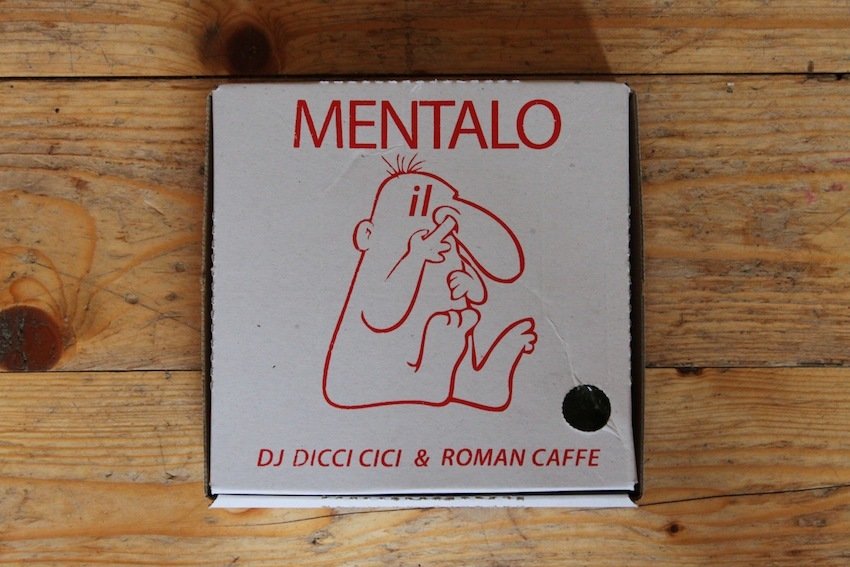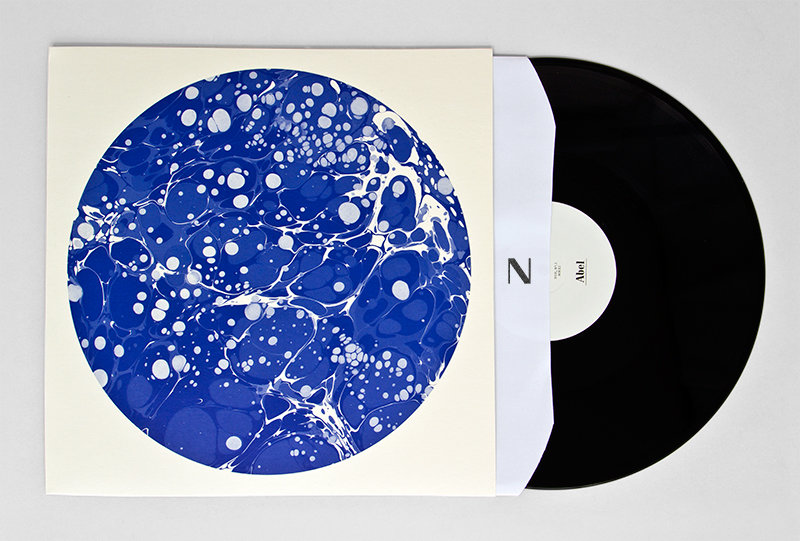Tokyo Tracks 011
-
Mori Art Museum / Metabolism / The City Of The Future / 17092011 – 15012012
(click on poster for link to the Mori web site)
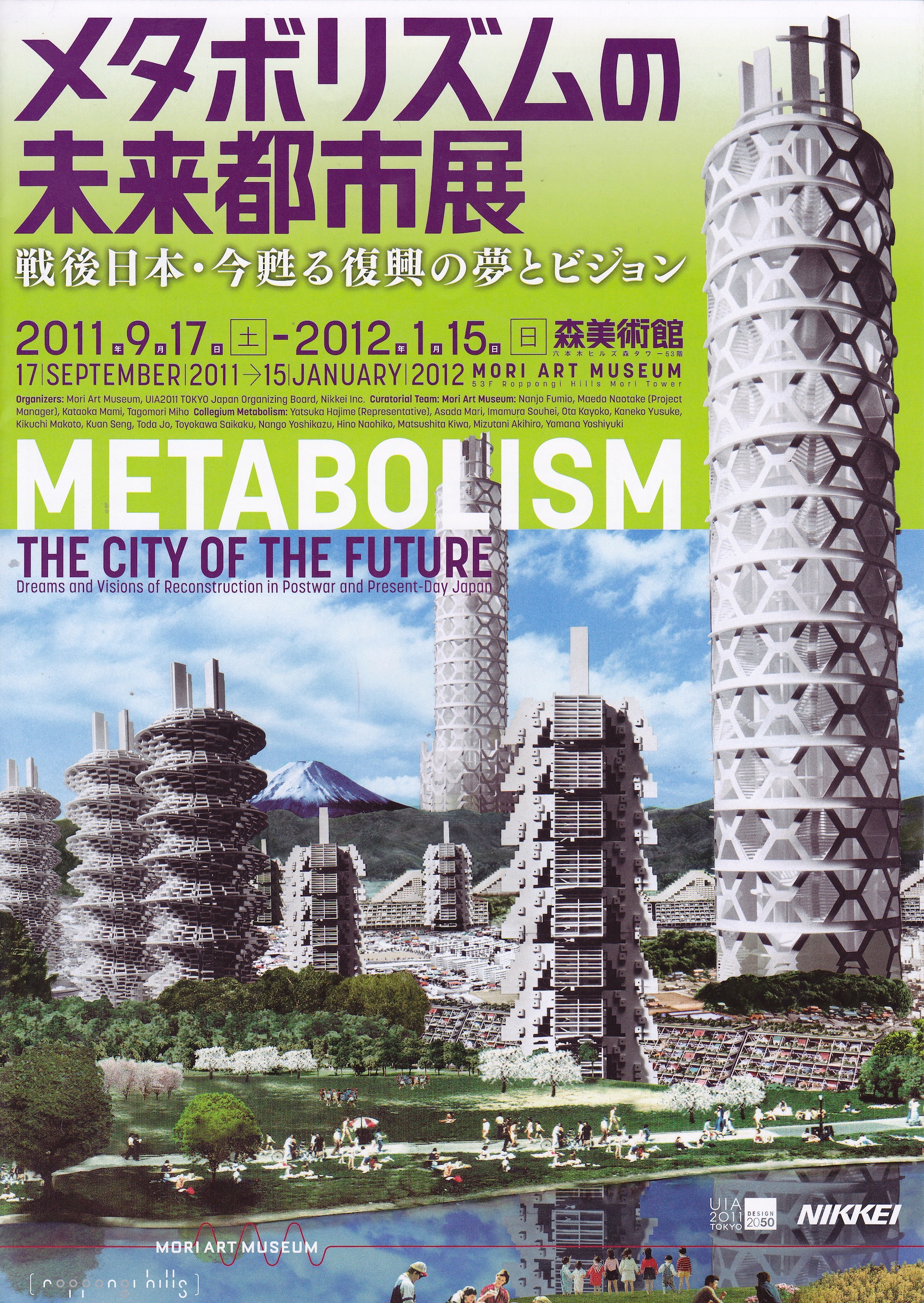
I have to admit that this was hard work. I know nothing about architecture so I had to read every board. It took me about two hours to go round the exhibition. And because nothing was immediately aesthetically capturing, there was no, brain switched off, “Oh, I like that”, buy a postcard. It`s not as simple as that. It`s all about ideas. I did learn a lot.
The first hall lays out the roots of the Metabolism movement. The need for cheap and easy-to-build accommodation following the destruction wrought by World War II. I was shocked by the Hiroshima landscape (an illustration of my ignorance), and surprised and disgusted by the pictures of fire-bombed Shinjuku (in much the same way as when I first saw pictures of Dresden). The History writers always seem to feel the need to beat the shit out of the already defeated. “Let this serve as an example”. Yep, that seems to have worked doesn`t it? Nothing bar a church in Hiroshima, and the remains of a railway station in Shinjuku, left standing. In all honesty looking pretty similar to the recent shots of Miyagi we posted from Japanese TV.
Metabolism set out to address this problem with architecture based on prefabricated repeating units. Designing structures that could grow “organically” as required, simply adding more units, like a cell dividing. Some members of the movement took the cellular analogy more literally than others, and as a result proposed living spaces look like cross-sections on a microscope. Terracing like golgi. Communal pools like dividing nuclei.
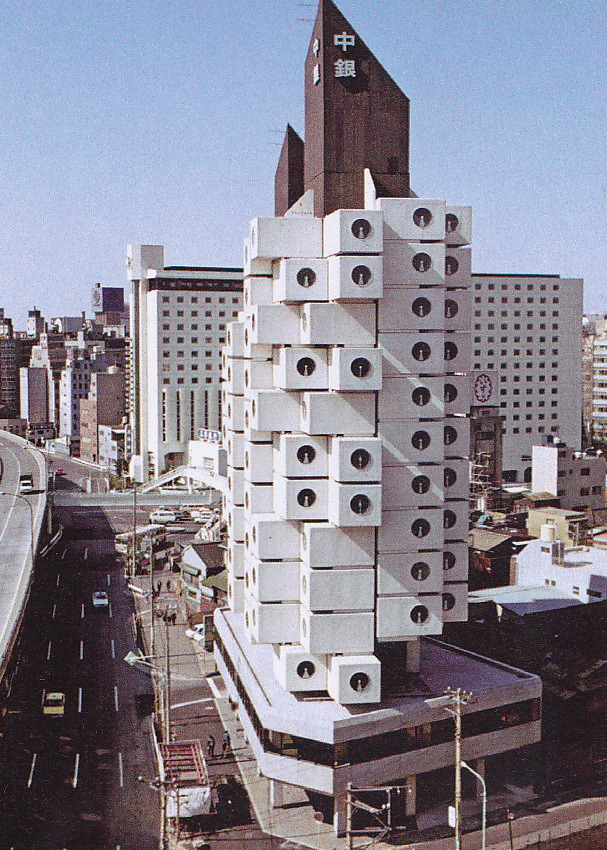
Post-War, as Japan entered the now barely-remembered economic “bubble”, the government anticipated a huge population increase (which never happened) and the “Metabolists” set about floating cities, reclaiming the sea and reaching for the sky. There are amazing models of cities based on DNA helices, spiraling further and further into the stratosphere.
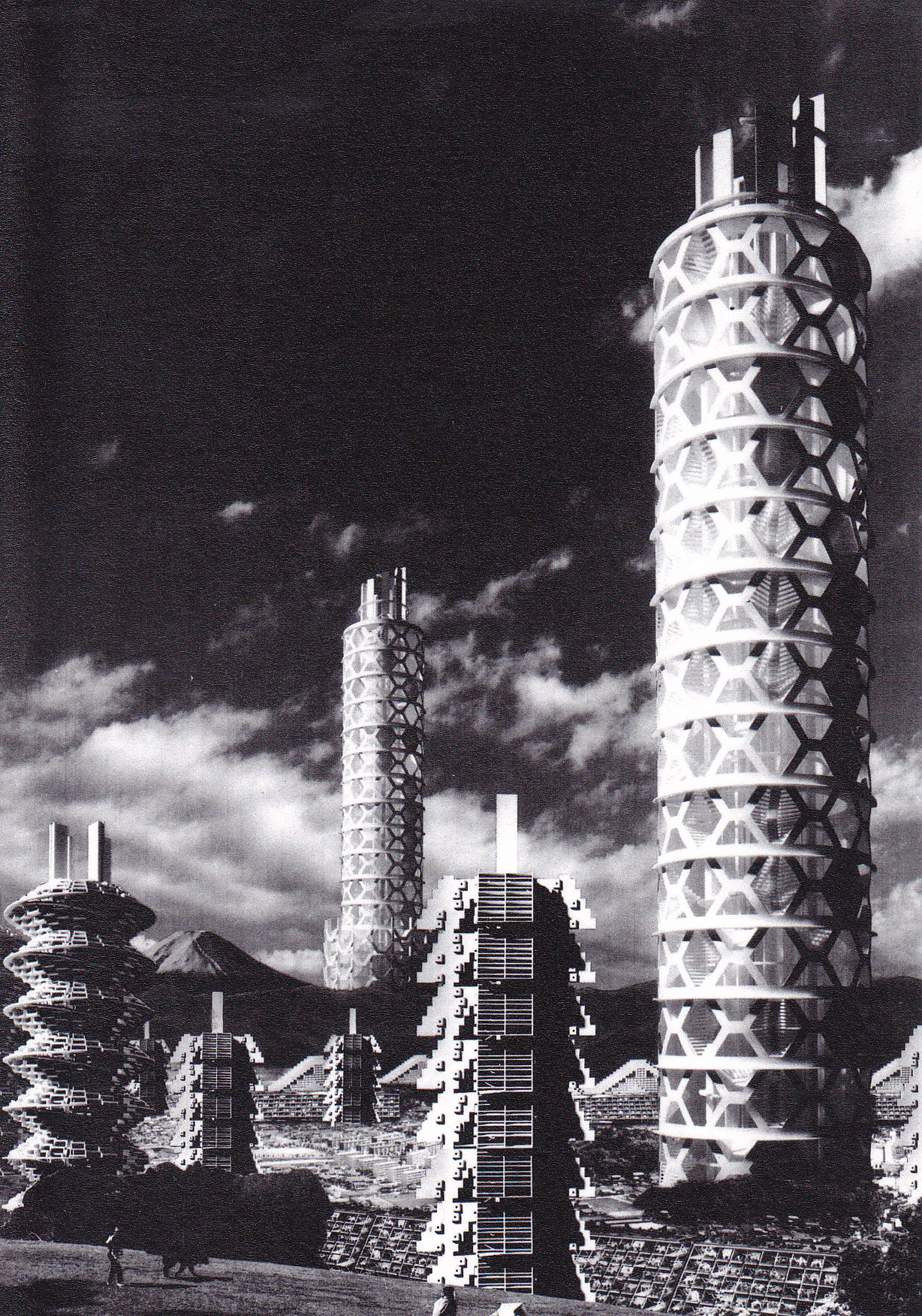
I guess the most well known example of the movement would be 60s capsule-living. Space Age batchelor pads where all you really need is a bed and a hi-fi (a drink and a hot lady?). The flagship for this domicile of the future was the Nakagin Capsule Tower Building, which I don`t think is still standing, but the idea obviously continues to the present day in the legendary capsule hotels that provide travellers in Tokyo, worse for wear or running late (usually both – career ladder karaoke to blame), somewhere clean, safe and inexpensive to sleep.
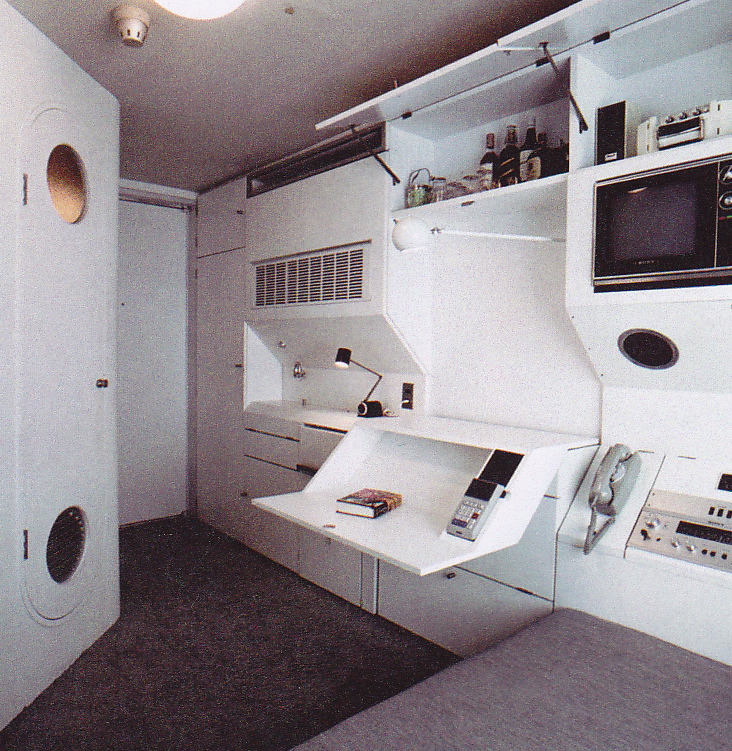
One extension of this prefabricated, self-contained, gadget-assisted, leisure-filled future was the Discotic Space Capsule. A night club in a box. A reflective steel shell installed in the basement of a Tokyo hotel. Looking at the photograph, we were wondering what it must have sounded like. Pretty heavy on the reverb was the consensus, which, since it was host to mainly Japanese psychedelic bands, probably added to the experience. Visions of a room full of loaded hippies bumping into polished metal. Following a fractal or looking for the toilets.
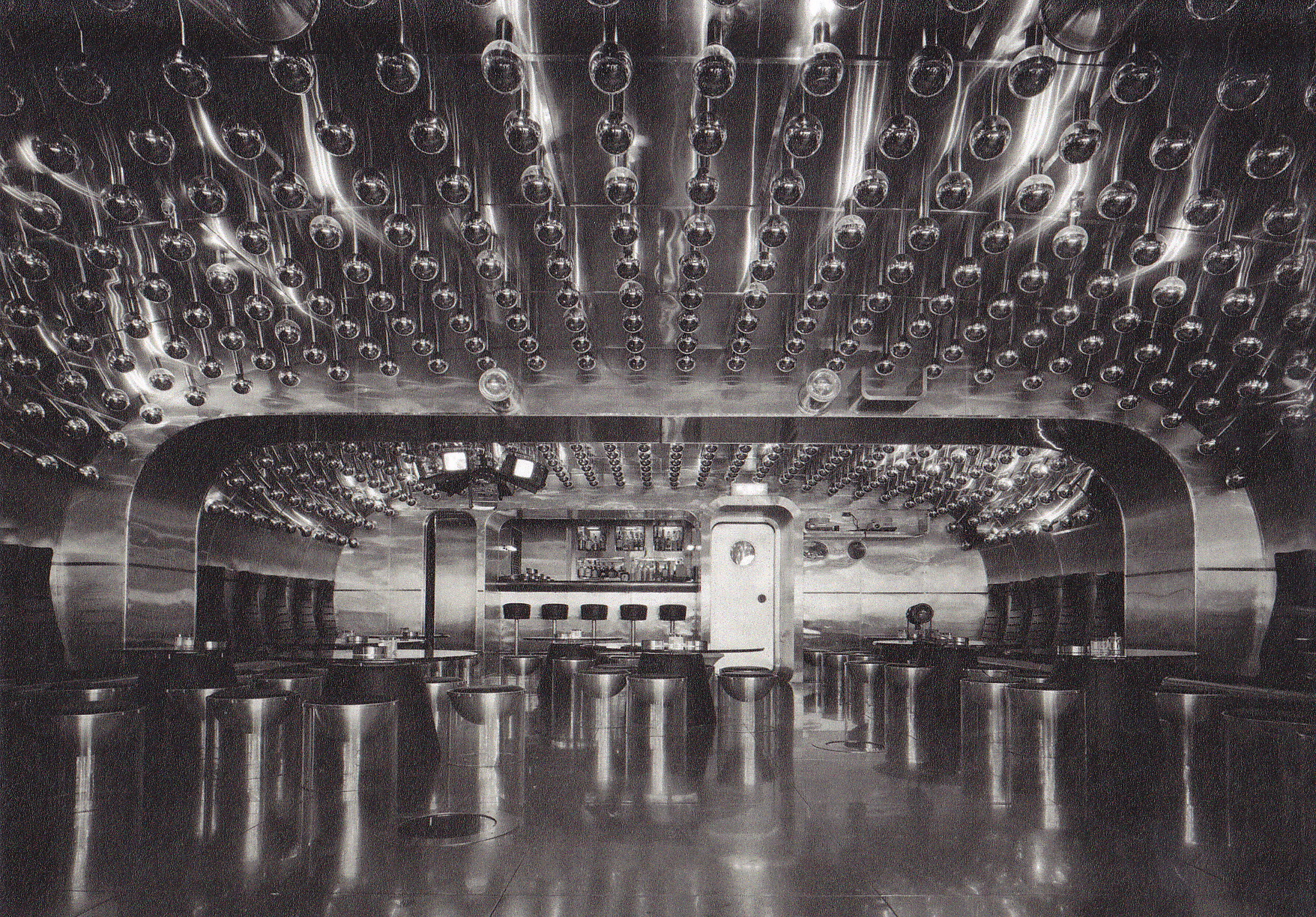
In all honesty, the plans and models in the exhibition are awe-inspiring, and demonstrate far-reaching solutions to problems that may be more pertinent now, with Daiichi and Daini only flirting with control (believe me everything is relative and the need for clean up colossal) and the globe locked into climate change. What was actually built is largely less inspiring. Prefabricated concrete tower blocks, which were without a doubt revolutionary fifty years ago, but now, to this ex-South Londoner, look like very familiar overcrowded monstrosities, that tower above a tired-looking traditional Japan.
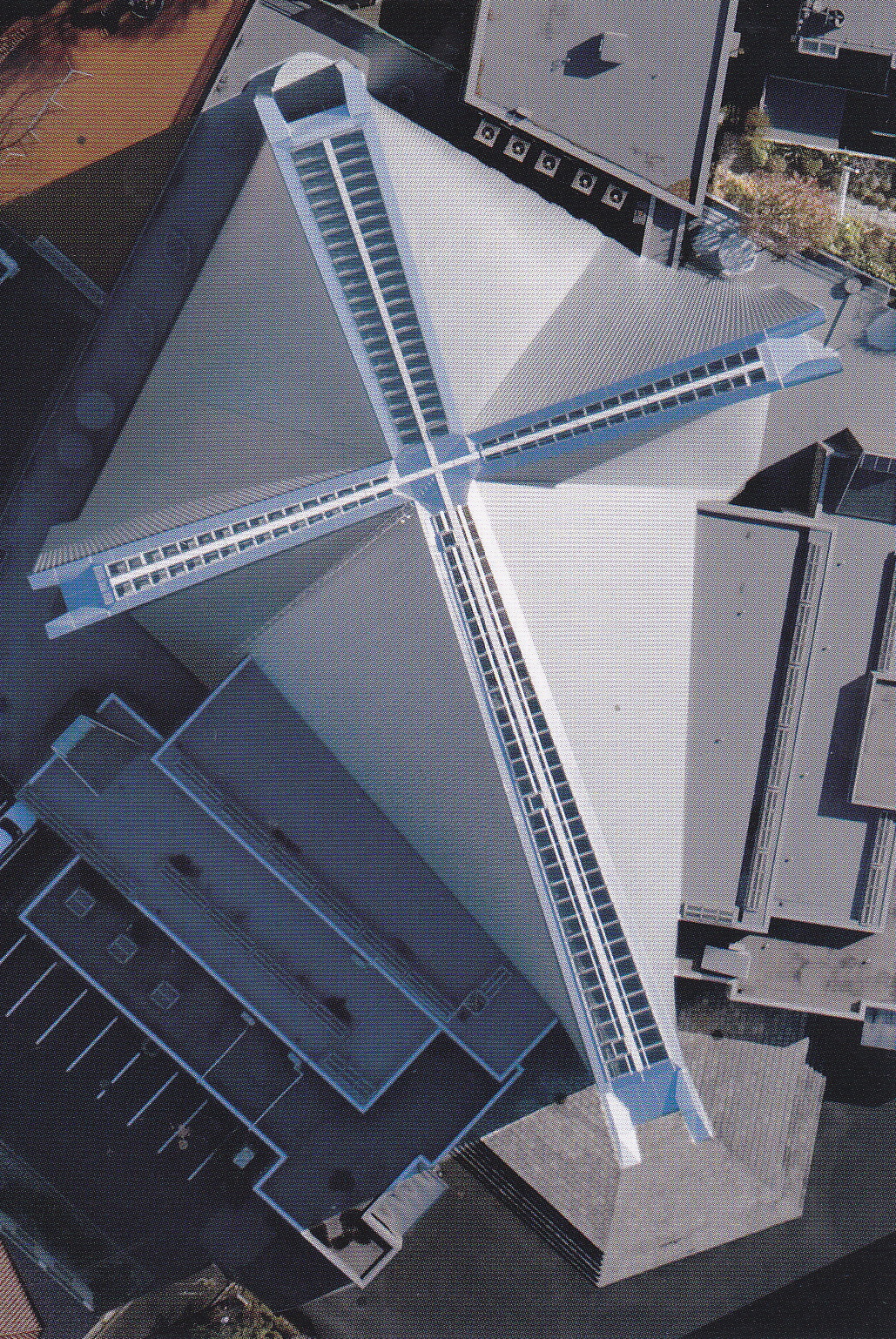
For me one of the exceptions to this is St. Mary`s Catholic Cathedral designed by Tange Kenzo. This is actually one of my favourite places in Tokyo. Not that I am religious, unless you count owning a copy Siddhartha. While it looks like an unfinished ventilation shaft from the outside, from above it is a UFO homing signal and the inside feels like a stone space ship with all light drawn to a single point above the altar. To the heavens. I try to avoid clichés but it is breath-taking. My kids used to go to nursery five minutes away, and I would often come here to sit and collect my thoughts. Often feeling terminally lost when we lived in Tokyo.
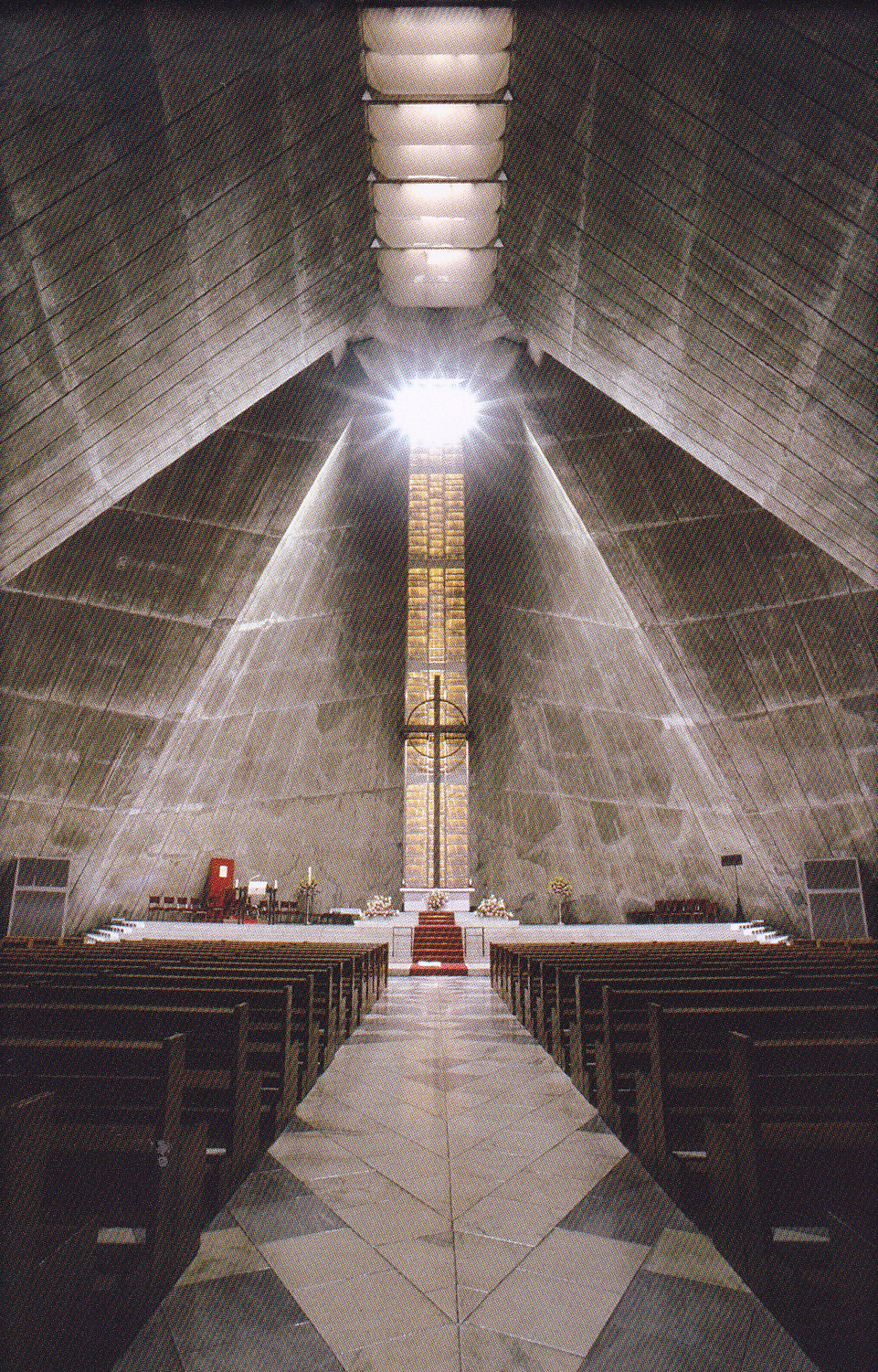
The last room of the exhibition is a series of visual presentations of suggested solutions to the regeneration needed following the Tohoku Earthquake. Self-contained emergency shelters with enough power and water for one month, resplendent gardens supported on towers far above a spent and ruined Earth. The ideas of the Metabolism become lightweight alloy. And more concrete. They look like science-fiction senarios, creating a divide of land and sky dwellers, of contaminated outcasts and a privileged elite, but they are also worryingly real.
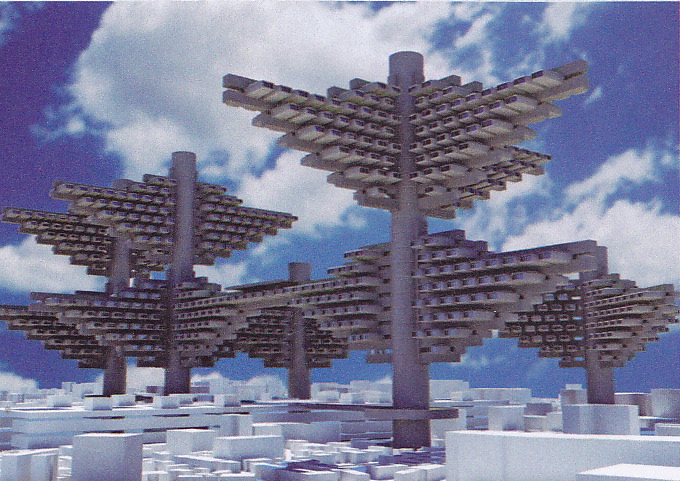
It could have been me – for once I wasn`t hung-over, having paced an expensive marble West Inn bathroom til sobriety woke – but the whole exhibition has an apocalyptic feel. From Hiroshima to Fukushima. Probably the reflection of a father`s worry. Everywhere, every life, presents its problems, presents its rules. Horizons. And limits.
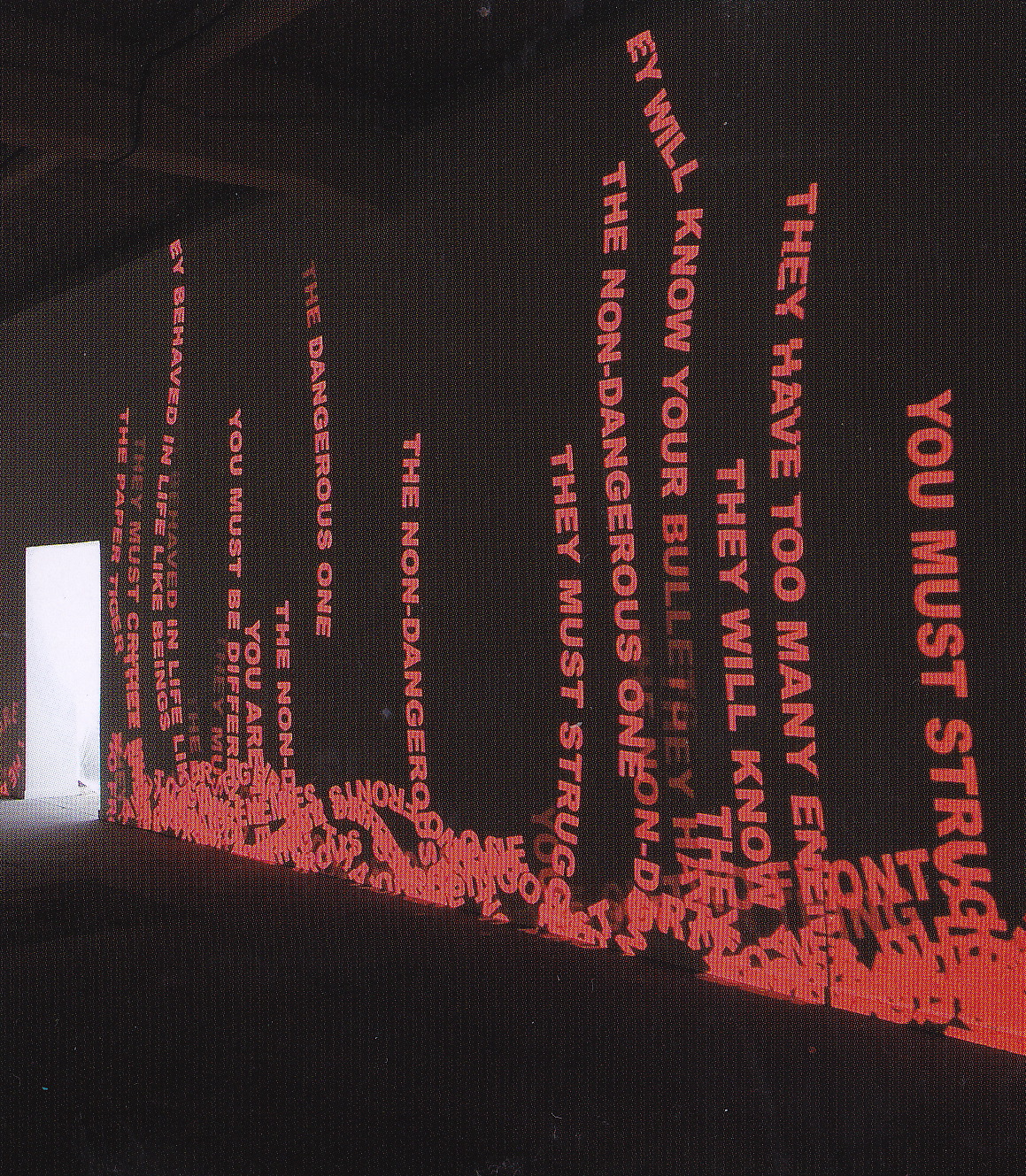
I stand in Tsang Kin-Wah`s MAM Project installation. A darkened room illuminated by words of hate and fear.
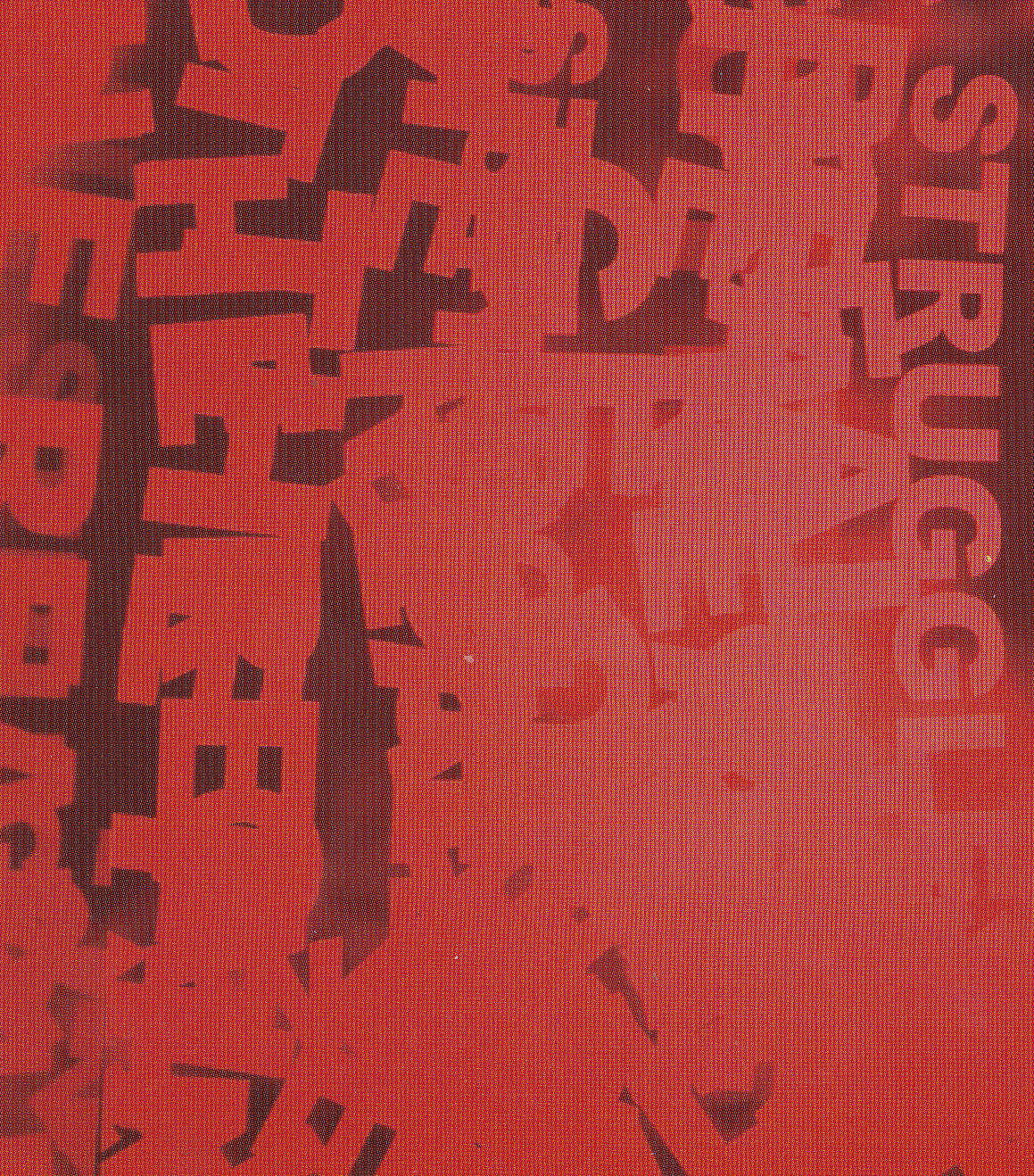
Where would I rather be? Greece? Iraq? The US? Somalia? Libya?
[audio:TT011_akebonoin.mp3]
Download

